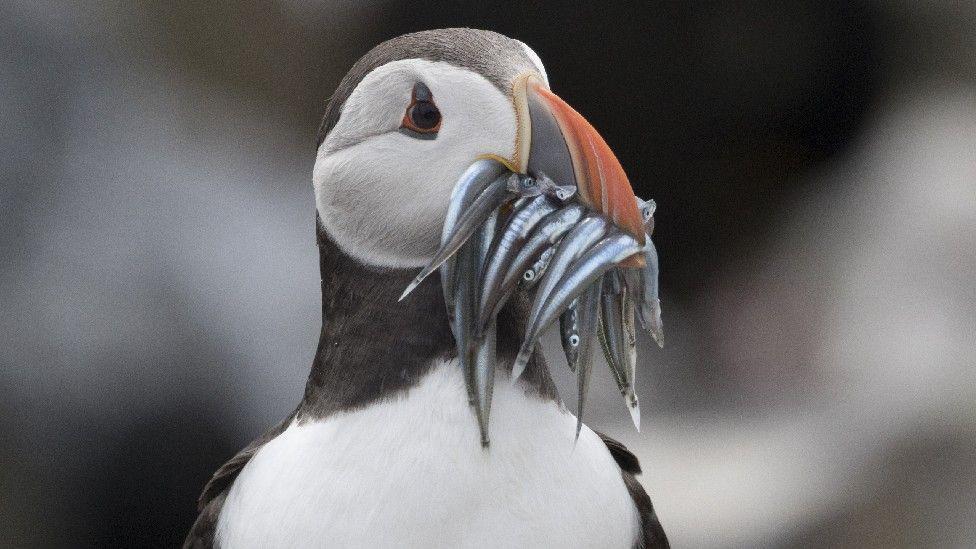Island bird counts reveal mixed picture
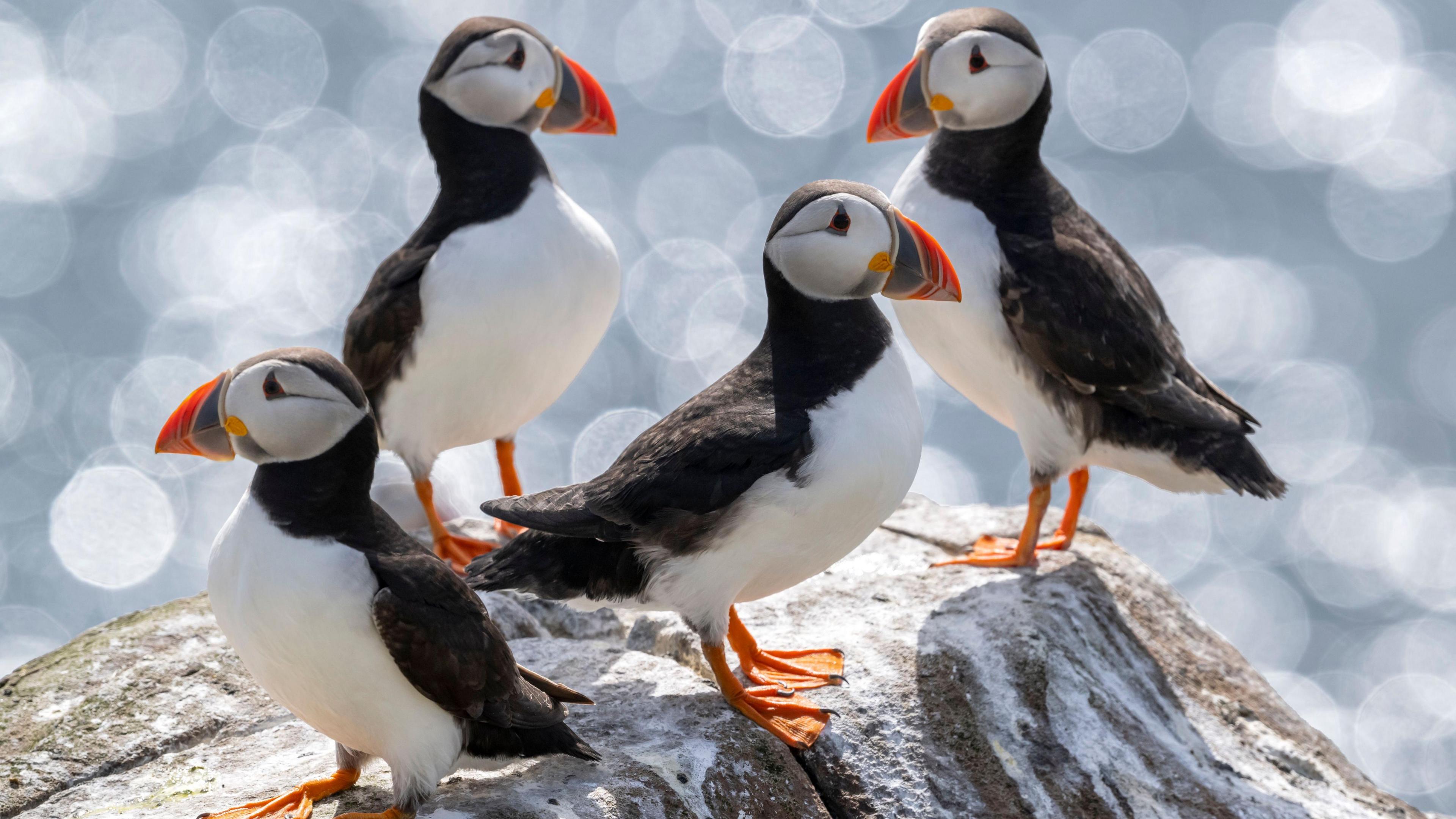
The Farne Islands is an internationally significant sanctuary for 200,000 seabirds each year
- Published
Bird counts on an island haven for seabirds have revealed a mixed picture.
The number of puffin breeding pairs on the Farne Islands in Northumberland has dropped by 23% in a year from 50,103 to 38,500 breeding pairs, the National Trust said.
However, it cautioned against interpreting the drop as a sudden population decline after the island was hit by bird flu and storms in recent years which killed thousands.
The annual count also revealed Arctic terns had increased by more than 26% from 410 to 519 nesting pairs and it was important the "broader context of global trends" was taken into account, the trust said.
Ben McCarthy, head of nature conservation for the trust, said although puffins were impacted by bird flu in 2022/23, they were "not as impacted as other species" due to their "naturally self-isolating behaviour".
He also said the shift to annual monitoring in 2019 reflected the trust's commitment to understanding and protecting puffins long term.
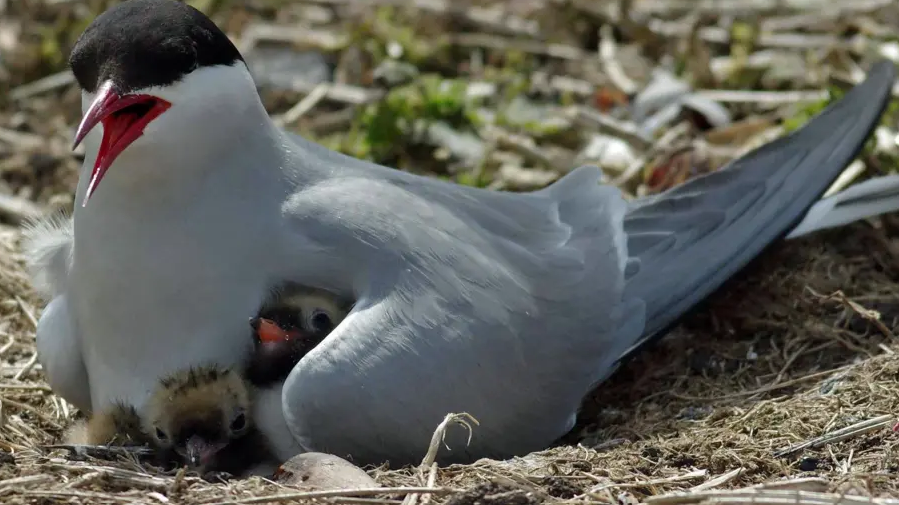
The Arctic terns population has leapt by 26% in a year to 519 nesting pairs
Implementing measures to deter seals from disturbing puffin nesting areas and encouraging them to remain within their usual pupping areas, were also helping to protect species, Mr McCarthy said.
The survey also revealed other species had struggled in the last year including Common tern numbers with breeding pairs halving from 10 to 5.
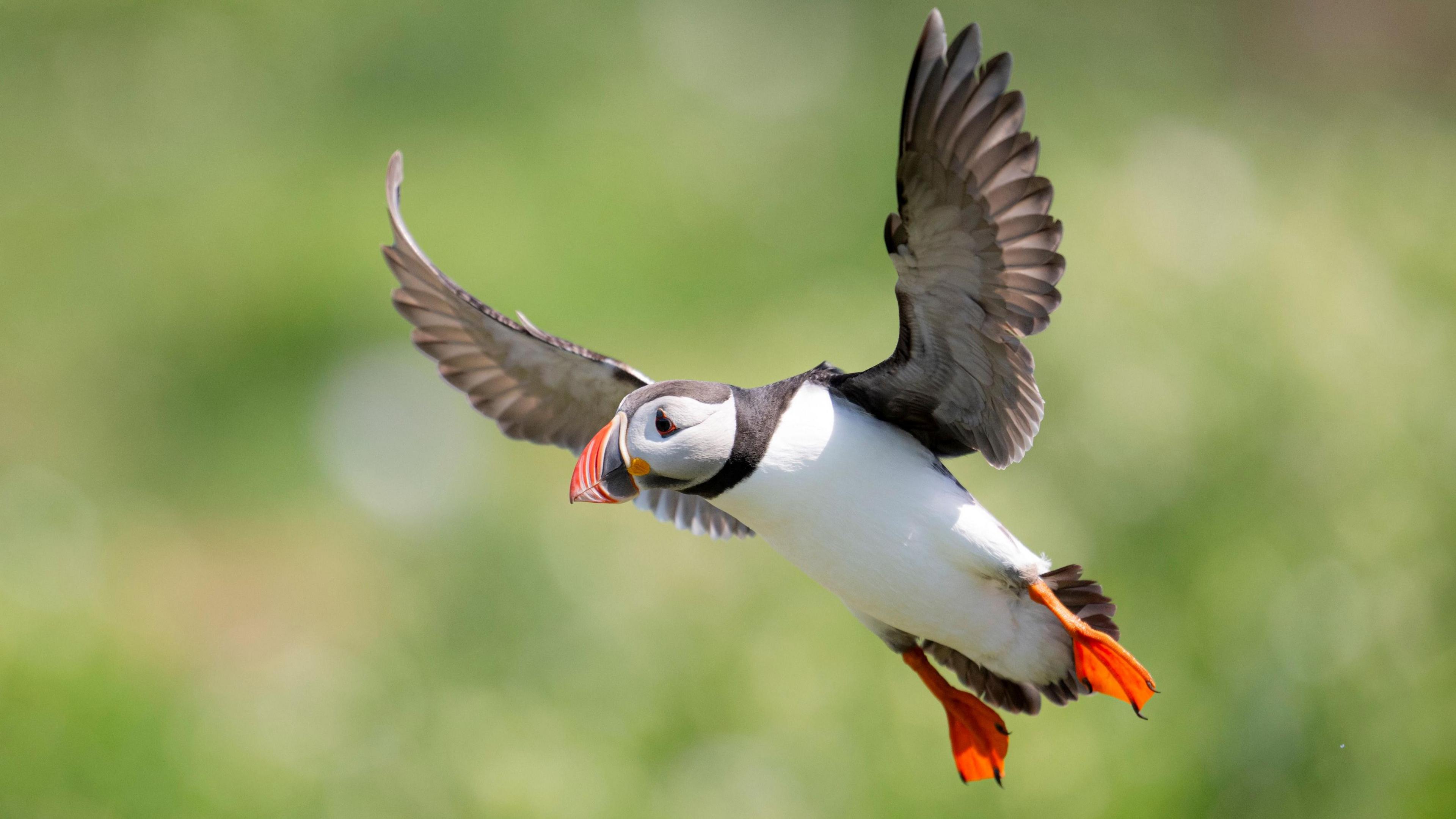
The trust said puffins were not as impacted by bird flu because of their naturally self-isolating behaviour
Follow BBC Newcastle on X, external, Facebook, external, Nextdoor and Instagram, external.
Get in touch
Do you have a story suggestion for BBC Tyne?
Related topics
Related stories
- Published13 November

- Published10 August
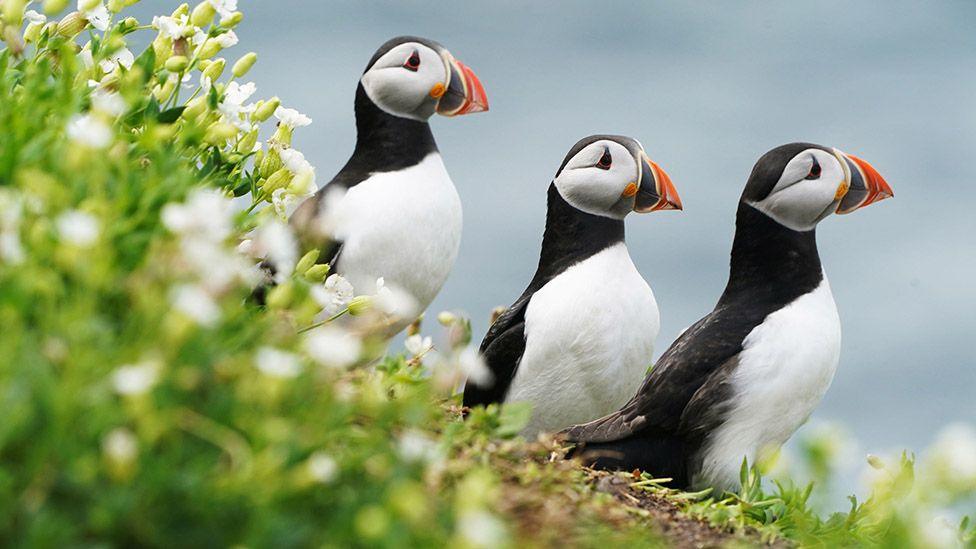
- Published3 April
